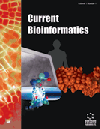
Full text loading...
We use cookies to track usage and preferences.I Understand
Microbes are intimately involved in the physiological and pathological processes of numerous diseases. There is a critical need for new drugs to combat microbe-induced diseases in clinical settings. Predicting potential microbe-drug associations is, therefore, essential for both disease treatment and novel drug discovery. However, it is costly and time-consuming to verify these relationships through traditional wet lab approaches.
We proposed an efficient computational model, STNMDA, that integrated a Structure-Aware Transformer (SAT) with a Deep Neural Network (DNN) classifier to infer latent microbe-drug associations. The STNMDA began with a “random walk with a restart” approach to construct a heterogeneous network using Gaussian kernel similarity and functional similarity measures for microorganisms and drugs. This heterogeneous network was then fed into the SAT to extract attribute features and graph structures for each drug and microbe node. Finally, the DNN classifier calculated the probability of associations between microbes and drugs.
Extensive experimental results showed that STNMDA surpassed existing state-of-the-art models in performance on the MDAD and aBiofilm databases. In addition, the feasibility of STNMDA in confirming associations between microbes and drugs was demonstrated through case validations.
Hence, STNMDA showed promise as a valuable tool for future prediction of microbe-drug associations.

Article metrics loading...

Full text loading...
References


Data & Media loading...

